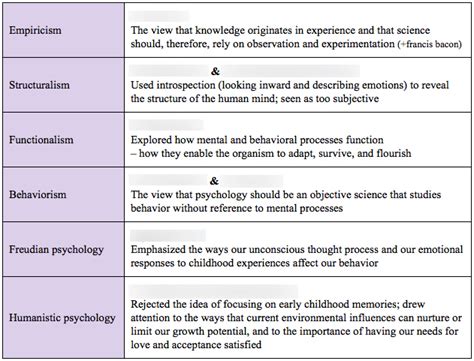Introduction:

The realm of psychology delves into the intricate workings of the human mind, and Unit 5 of the AP Psychology curriculum uncovers fundamental aspects of motivation, emotion, and development. By exploring these core concepts, students embark on a journey of discovery, gaining insights into the forces that drive our behavior, shape our experiences, and guide our growth throughout the lifespan.
Chapter 1: Motivation
Defining Motivation:
Motivation refers to the internal processes that drive behavior towards specific goals. It encompasses the reasons why we engage in certain actions and the factors that influence our pursuit of them.
Biological Perspectives:
- Need Theories: Focus on the role of physiological needs (e.g., hunger, thirst) in motivating behavior.
- Drive Reduction Theory: States that motivation arises from the desire to reduce unpleasant internal states (e.g., deprivation).
Cognitive Perspectives:
- Incentive Theory: Motivates us to pursue rewards and avoid punishments.
- Cognitive Dissonance Theory: Motivates us to resolve conflicts between our beliefs and actions.
- Goal-Setting Theory: Suggests that specific, challenging, and attainable goals enhance motivation.
Social Perspectives:
- Social Comparison Theory: Motivates us to compare ourselves with others and strive for social approval.
- Self-Determination Theory: Emphasizes the importance of intrinsic motivation (e.g., curiosity, competence) for optimal well-being.
Chapter 2: Emotion
Understanding Emotion:
Emotions are complex physiological, behavioral, and cognitive responses to internal and external stimuli. They involve subjective feelings, physical reactions, and expressive behaviors.
Theories of Emotion:
- James-Lange Theory: Proposes that physiological changes trigger emotional experiences.
- Cannon-Bard Theory: States that physiological changes and emotional experiences occur simultaneously.
- Schachter-Singer Two-Factor Theory: Suggests that emotional experiences result from physiological arousal and cognitive interpretations.
Physiological and Behavioral Aspects:
- Autonomic Nervous System: Regulates physiological responses associated with emotions (e.g., heart rate, breathing).
- Hormonal Influences: Hormones (e.g., cortisol, oxytocin) play a significant role in emotional regulation.
- Facial Expressions: Facial muscles convey emotions, enabling communication and social interaction.
Cognitive and Social Aspects:
- Emotional Appraisal: The process by which we interpret and evaluate emotional stimuli.
- Emotional Intelligence: The ability to recognize, understand, and manage one’s own and others’ emotions.
- Social Transmission of Emotion: Emotions can be transmitted from one person to another through facial expressions and bodily cues.
Chapter 3: Development
Cognitive Development:
- Piaget’s Stages: Proposed a series of stages in which children’s cognitive abilities gradually develop.
- Vygotsky’s Sociocultural Theory: Emphasizes the role of social interaction and cultural influences on cognitive development.
- Information Processing Theory: Examines how individuals process, store, and retrieve information.
Social Development:
- Attachment Theory: Explains the development of close emotional bonds between infants and caregivers.
- Socialization Theory: Describes the process by which individuals learn social norms, values, and behaviors.
- Moral Development: Cognitive and emotional aspects of understanding and adhering to moral principles.
Physical Development:
- Prenatal Development: The development of the fetus within the womb from conception to birth.
- Childhood Growth: Rapid physical growth and maturation during early childhood.
- Adolescence: A period of significant physical and emotional changes marking the transition from childhood to adulthood.
Motivation:
- Enhancing Student Motivation: Implement goal-setting strategies, provide incentives, and foster a positive learning environment.
- Boosting Employee Productivity: Create motivating work environments, offer incentives, and provide opportunities for growth.
- Promoting Healthy Behaviors: Utilize cognitive dissonance and goal-setting to encourage healthy choices (e.g., exercise, nutrition).
Emotion:
- Emotional Regulation in the Workplace: Train employees in emotional intelligence skills to promote workplace harmony and reduce stress.
- Therapeutic Interventions: Cognitive-behavioral therapy (CBT) and other approaches help individuals manage negative emotions and promote well-being.
- Conflict Resolution: Apply principles of social comparison and emotional intelligence to facilitate conflict resolution and foster cooperation.
Development:
- Early Childhood Education: Design age-appropriate learning experiences based on cognitive and social development theories.
- Parenting Strategies: Utilize attachment theory and socialization theory to foster healthy parent-child relationships.
- Educational Interventions: Implement interventions to support students at different developmental stages and address learning challenges.
Table 1: Maslow’s Hierarchy of Needs
| Deficiency Needs | Growth Needs |
|---|---|
| Physiological | Esteem |
| Safety | Self-Actualization |
| Belongingness | |
| Love |
Table 2: Piaget’s Stages of Cognitive Development
| Stage | Age Range | Cognitive Characteristics |
|---|---|---|
| Sensorimotor | 0-2 years | Exploring the world through senses and actions |
| Preoperational | 2-7 years | Egocentric thinking, difficulty with logical reasoning |
| Concrete Operational | 7-11 years | Concrete thinking, ability to classify and conserve |
| Formal Operational | 11+ years | Abstract thinking, hypothetical reasoning |
Table 3: Erikson’s Stages of Psychosocial Development
| Stage | Age Range | Psychosocial Crisis |
|---|---|---|
| Trust vs. Mistrust | Infancy | Forming secure attachments |
| Autonomy vs. Shame | Early Childhood | Developing independence |
| Initiative vs. Guilt | Play Age | Exploring the world |
| Industry vs. Inferiority | School Age | Developing competence |
| Identity vs. Role Confusion | Adolescence | Forming an identity |
Table 4: Social Development Theories
| Theory | Key Concepts |
|---|---|
| Attachment Theory | Formation of emotional bonds between infants and caregivers |
| Socialization Theory | Learning social norms and values from society |
| Social Cognitive Theory | Observing and imitating the behavior of others |
- Attend class regularly and participate actively.
- Read the textbook and take detailed notes.
- Review material frequently and complete practice problems.
- Seek help from your teacher or tutor when needed.
- Utilize study groups and online resources.
- Practice self-care and maintain a healthy lifestyle.
Unit 5 of AP Psychology provides a comprehensive exploration of the fundamental concepts of motivation, emotion, and development. By understanding these core aspects of human behavior, students gain a deeper appreciation of themselves, others, and the world around them. The applications of this knowledge extend far beyond the classroom, empowering individuals to thrive in various settings and live fulfilling lives.
